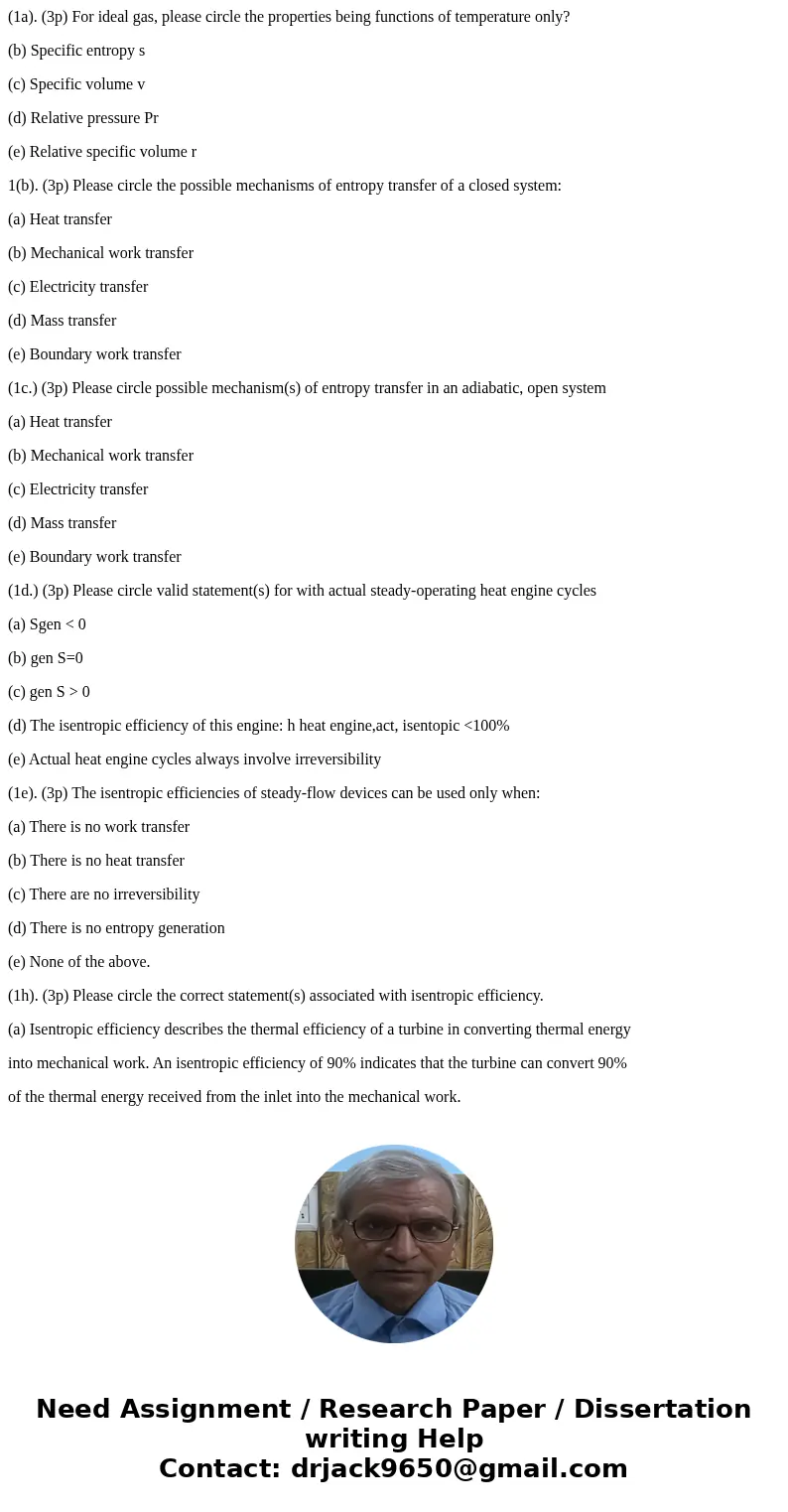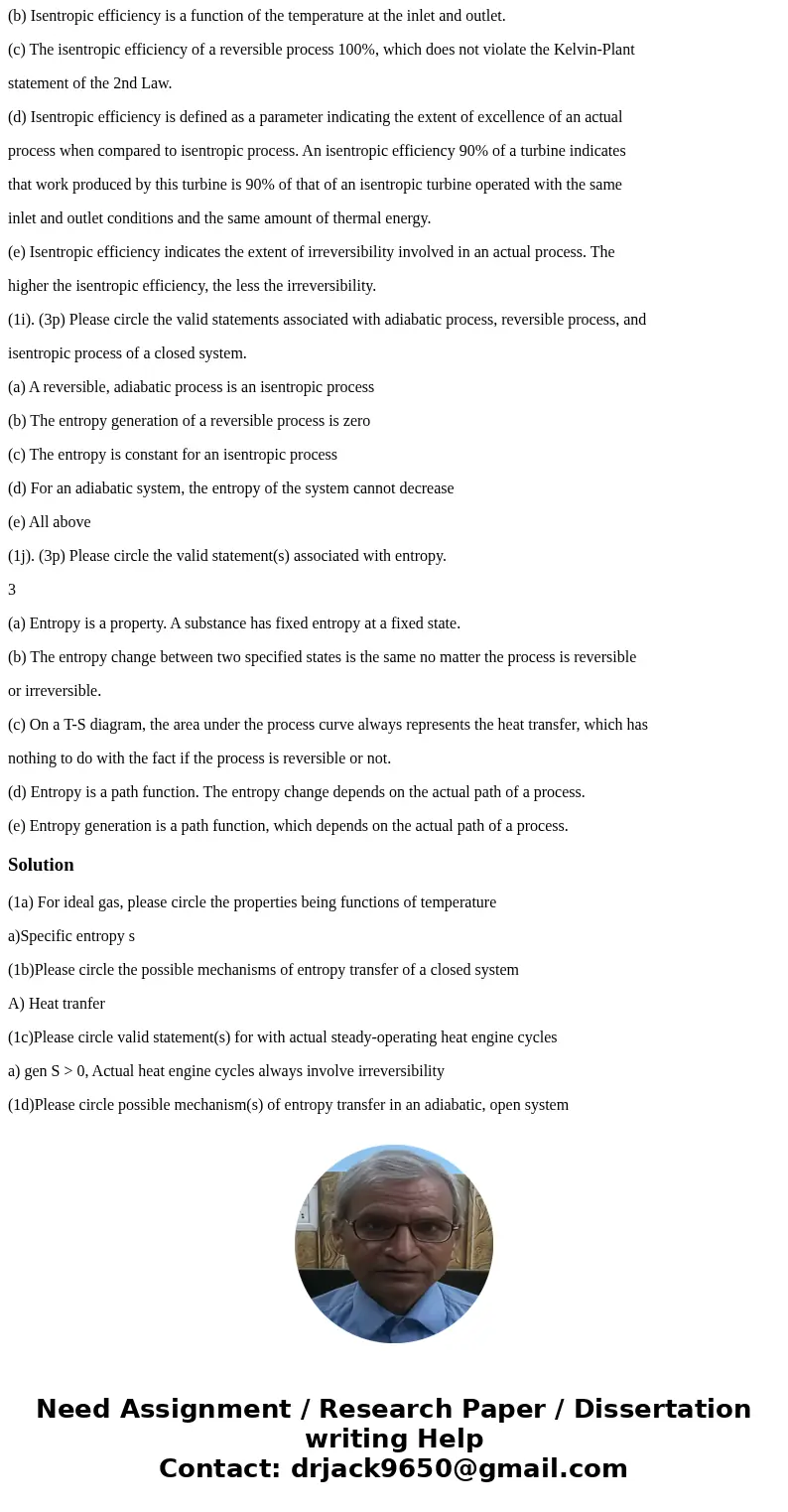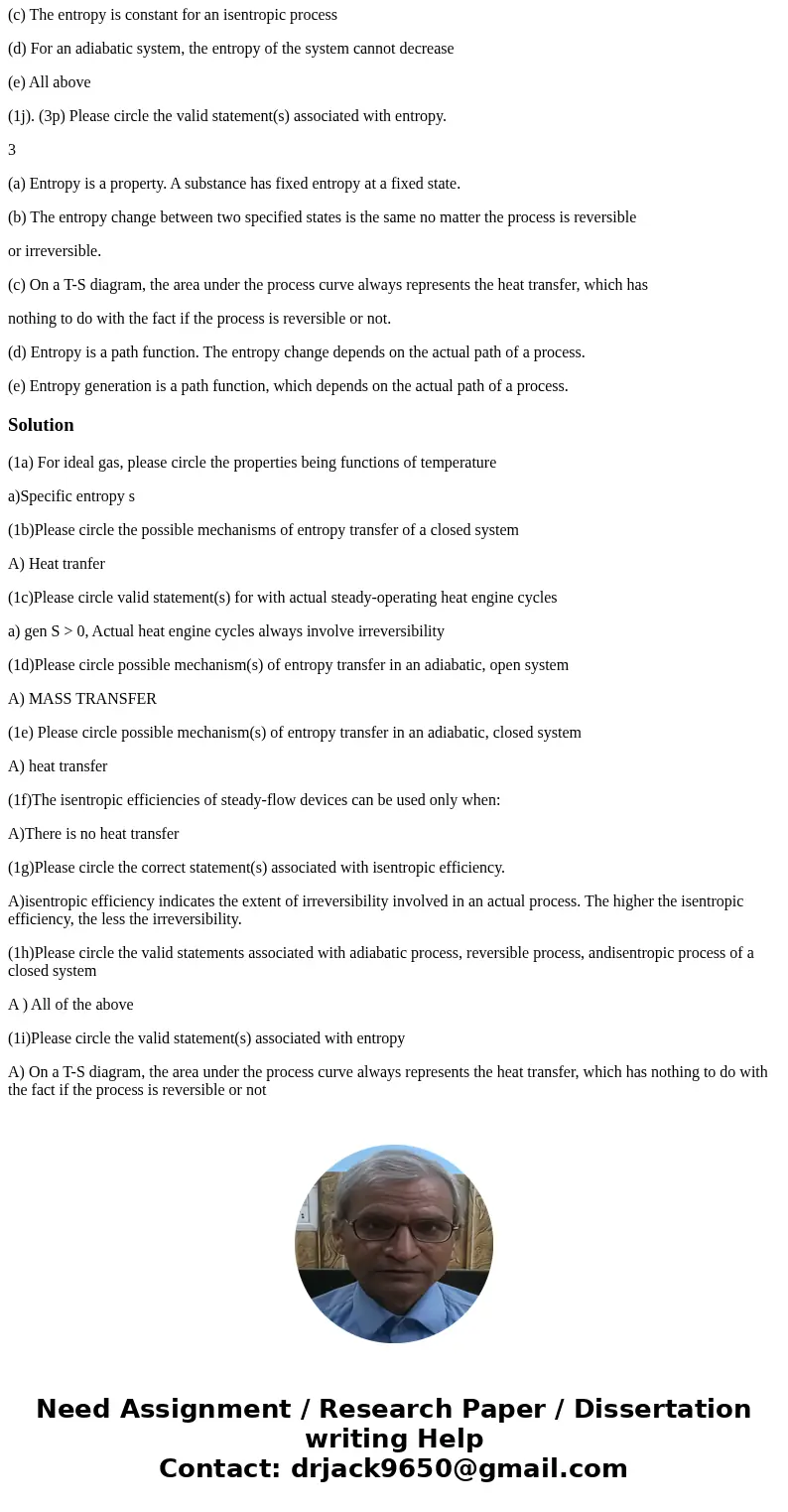1a 3p For ideal gas please circle the properties being funct
(1a). (3p) For ideal gas, please circle the properties being functions of temperature only?
(b) Specific entropy s
(c) Specific volume v
(d) Relative pressure Pr
(e) Relative specific volume r
1(b). (3p) Please circle the possible mechanisms of entropy transfer of a closed system:
(a) Heat transfer
(b) Mechanical work transfer
(c) Electricity transfer
(d) Mass transfer
(e) Boundary work transfer
(1c.) (3p) Please circle possible mechanism(s) of entropy transfer in an adiabatic, open system
(a) Heat transfer
(b) Mechanical work transfer
(c) Electricity transfer
(d) Mass transfer
(e) Boundary work transfer
(1d.) (3p) Please circle valid statement(s) for with actual steady-operating heat engine cycles
(a) Sgen < 0
(b) gen S=0
(c) gen S > 0
(d) The isentropic efficiency of this engine: h heat engine,act, isentopic <100%
(e) Actual heat engine cycles always involve irreversibility
(1e). (3p) The isentropic efficiencies of steady-flow devices can be used only when:
(a) There is no work transfer
(b) There is no heat transfer
(c) There are no irreversibility
(d) There is no entropy generation
(e) None of the above.
(1h). (3p) Please circle the correct statement(s) associated with isentropic efficiency.
(a) Isentropic efficiency describes the thermal efficiency of a turbine in converting thermal energy
into mechanical work. An isentropic efficiency of 90% indicates that the turbine can convert 90%
of the thermal energy received from the inlet into the mechanical work.
(b) Isentropic efficiency is a function of the temperature at the inlet and outlet.
(c) The isentropic efficiency of a reversible process 100%, which does not violate the Kelvin-Plant
statement of the 2nd Law.
(d) Isentropic efficiency is defined as a parameter indicating the extent of excellence of an actual
process when compared to isentropic process. An isentropic efficiency 90% of a turbine indicates
that work produced by this turbine is 90% of that of an isentropic turbine operated with the same
inlet and outlet conditions and the same amount of thermal energy.
(e) Isentropic efficiency indicates the extent of irreversibility involved in an actual process. The
higher the isentropic efficiency, the less the irreversibility.
(1i). (3p) Please circle the valid statements associated with adiabatic process, reversible process, and
isentropic process of a closed system.
(a) A reversible, adiabatic process is an isentropic process
(b) The entropy generation of a reversible process is zero
(c) The entropy is constant for an isentropic process
(d) For an adiabatic system, the entropy of the system cannot decrease
(e) All above
(1j). (3p) Please circle the valid statement(s) associated with entropy.
3
(a) Entropy is a property. A substance has fixed entropy at a fixed state.
(b) The entropy change between two specified states is the same no matter the process is reversible
or irreversible.
(c) On a T-S diagram, the area under the process curve always represents the heat transfer, which has
nothing to do with the fact if the process is reversible or not.
(d) Entropy is a path function. The entropy change depends on the actual path of a process.
(e) Entropy generation is a path function, which depends on the actual path of a process.
Solution
(1a) For ideal gas, please circle the properties being functions of temperature
a)Specific entropy s
(1b)Please circle the possible mechanisms of entropy transfer of a closed system
A) Heat tranfer
(1c)Please circle valid statement(s) for with actual steady-operating heat engine cycles
a) gen S > 0, Actual heat engine cycles always involve irreversibility
(1d)Please circle possible mechanism(s) of entropy transfer in an adiabatic, open system
A) MASS TRANSFER
(1e) Please circle possible mechanism(s) of entropy transfer in an adiabatic, closed system
A) heat transfer
(1f)The isentropic efficiencies of steady-flow devices can be used only when:
A)There is no heat transfer
(1g)Please circle the correct statement(s) associated with isentropic efficiency.
A)isentropic efficiency indicates the extent of irreversibility involved in an actual process. The higher the isentropic efficiency, the less the irreversibility.
(1h)Please circle the valid statements associated with adiabatic process, reversible process, andisentropic process of a closed system
A ) All of the above
(1i)Please circle the valid statement(s) associated with entropy
A) On a T-S diagram, the area under the process curve always represents the heat transfer, which has nothing to do with the fact if the process is reversible or not



 Homework Sourse
Homework Sourse